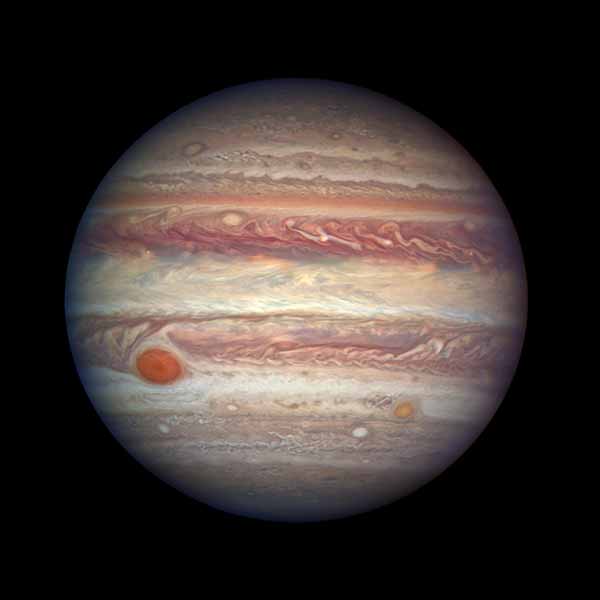Tushna Commissariat reviews Jupiter by William Sheehan and Thomas Hockey

Ask anyone what their favourite planet in our solar system is, and it’s usually a 50:50 split between Saturn and Jupiter (all jokes about Uranus notwithstanding). But there seems to be something particularly captivating about the biggest planet in our system, with its swirling surface, Giant Red Spot and battalion of satellites (67 to be precise). Having fascinated humans for millennia, it’s no surprise then, that new books on the fifth planet from the Sun keep popping up, despite the many already available tomes on the subject.
Jupiter by William Sheehan and Thomas Hockey is the latest book in the Kosmos series by publisher Reaktion Books. Sheehan is a psychiatrist by training, but has long been an amateur astronomer and historian, and has written many books on the subject. Hockey is professor of astronomy at the University of Northern Iowa. Although A5 in size, this book is a glossy coffee-table title, packed with more than 100 images and illustrations. The opening chapters do a good job in tackling the birth of the solar system and all the Jovian planets; describing how they formed; before delving into Jupiter itself, layer by layer, from atmosphere to core. The book does contain a substantial amount of historical background, both observational and theoretical, but this is interspersed throughout the text rather than being clumped into the start, which might otherwise have slowed down readers.
Apart from talking about very early observations of the planet, the book covers all the many missions and probes that have visited Jupiter from Pioneer onwards, slowing peeling back the layers and mysteries of our favourite gas giant. Sheehan and Hockey’s language is clear and mostly lacking in jargon, if occasionally effusive, and the book is well-paced, if a bit clogged with facts and figures. The final chapter, “Juno to Jupiter”, is particularly interesting as it details some of our most recent discoveries thanks to the NASA mission, ending the book on a good note. While not being revelatory, Jupiter is a useful and practical planetary-science primer.
- Reaktion Books £25hb 192pp



